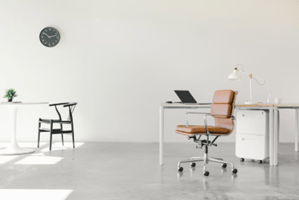An office refurbishment can be an essential step in bringing your workspace into the modern age,...
Workplace Culture: Embracing Flexibility & Collaboration
Having recently considered the UK’s coolest offices and the role that they play in recruitment and retention, it’s interesting to give UK office culture, per se, a pause for thought. Our current obsession with providing the most engaging spaces is, of course, inextricably linked with office culture and how we interact with each other during (and around) our working hours.

The designs that feature highly on a lot of our client lists at the moment include elaborate breakout areas and allow for a mix of entertainment. Such initiatives are targeted to ensure that we socialize with each other, besides taking regular breaks.
We have, indeed, raised the bar in our corporate environments of late with onsite gyms, chill out zones and drinks on tap for those who fancy a tipple on a Friday afternoon. These offices are very much geared towards providing a warm and inclusive atmosphere – pulling us in and keeping us together.
There’s been much talk about ‘collaborative working’ and many offices are now designed to encourage this by concentrating on the shared space and making these areas a social hub. If we are drawn together to socialize, we will gel better as a team and likely become a more productive unit.
It’s not so much a blurring of the lines as a softening of the boundaries. A decade ago, there was a discreet but obvious split between those who relished socializing with colleagues and those who preferred to compartmentalize and keep their home and work life separate.
The latter group didn’t necessarily want to go for drinks with work colleagues and they most certainly didn’t want to end up ‘talking shop’ in a bar. Lunch was a sandwich at the desk or a trip to the shops and this is still true for many.
However, what many of today’s office spaces do is give us the luxury of choice. There is room to mingle with co-workers, share a table in a breakout area with a colleague and eat lunch in a specially designated space away from your usual working area – if you want to.
This less pressured, informal vibe is more conducive to mixing and mingling and is far more likely to generate a positive response. It’s easier to stay on and have a drink with colleagues in the office than to trek to a bar or pub. Similarly, if everyone is eating together and the food is subsidized or provided free of charge on the premises, more people are likely to share a bite.
What’s great about general office culture now – when I say general, I mean the culture apparent in the larger and more forward-thinking companies who take the working environment and the provision of facilities seriously – is that there is more evidence of the fore-mentioned choice. By providing spaces that are more flexible and attractive, relaxing and social, companies are taking a ‘softly, softly’ approach to encouraging their workers to mix. It’s not enforced and, especially when it doesn’t feel forced, individuals are far more likely to opt in.
The millennial workforce isn’t as rigid as any previous generation and is more open to blending its work and personal lives and so a more blended style of working environment and approach to work suits it far better.
And, for the canny employer, presenting a dual ‘work’ and ‘play’ environment keeps the employees close and fosters the likelihood of better productivity.



